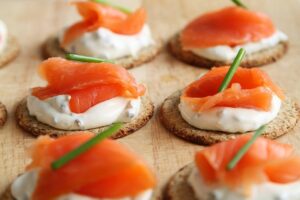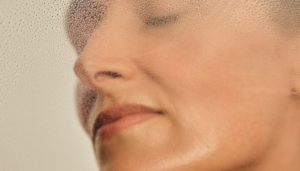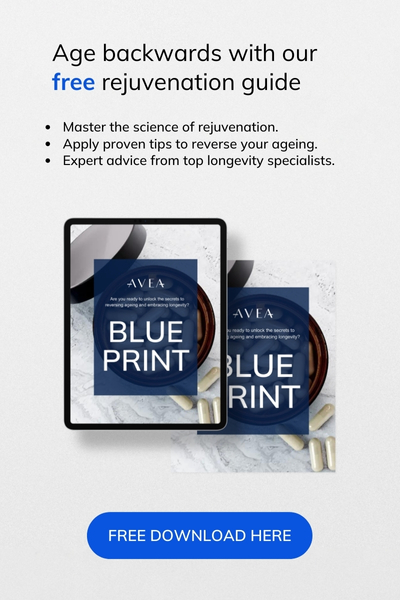72% of us are struggling with stress, whilst 70% show at least one feature of burnout. As a society, we simply cannot ignore the significant rise in mental health challenges. It needs to be addressed now.

Harvard physician and well-recognised stress expert, Dr. Aditi Nerurkar has dedicated herself to understanding and combating modern-day burnout.
Drawing from her own harrowing experiences as a medical student working 80-hour weeks, she has become the doctor she once needed, uncovering crucial studies that offer solutions beyond mere relaxation techniques.
In this article
FREE longevity guide

- Master the science of rejuvenation.
- Apply proven tips to turn back the clock.
- Transform your health with top longevity specialists.
Why is everyone so stressed?
Today, we see escalating rates of depression, sleep disorders, fatigue, and burnout, largely because stress levels are higher than ever.
With at least 60 to 80% of patient visits having a stress-related component, and many people unable to disconnect from work—often checking their phones up to 2,600 times a day—the prevalence of burnout is undeniable.

330 million people can go as long as two weeks without speaking to anyone, highlighting the isolating nature of our collective stress.
Addressing this crisis, Dr. Nerurkar proposes ‘the five resets’ to help us not only survive but thrive in today’s stress-filled world in her book—’’The 5 Resets: Rewire Your Brain and Body for Less Stress and More Resilience’’.
Here are some insights we can take from her interview with Steven on his podcast; Diary of a CEO.
What are the signs of burnout?
Anxiety, depression, sleep disorders, stress-related disorders, and a general feeling of malaise or fatigue are all indicators that you might be experiencing burnout—now more than ever.
It’s often due to a delayed stress reaction. So, what is stress? It’s crucial to define this term, and also to distinguish it from burnout. Are they the same, or different?
Under normal circumstances, we function resiliently, governed by the prefrontal cortex, responsible for executive functions like planning and organisation. Under stress, however, control shifts to the amygdala, the brain’s emotional centre, triggering the fight-or-flight response.
Acute stress is something our brains and bodies can manage well—it’s evolutionarily beneficial. But chronic stress, where there’s a constant, low hum of fight-or-flight response due to modern pressures like financial troubles or health issues, leads to burnout.
Your brain doesn’t get a chance to rest or recharge, leading to chronic burnout symptoms such as
- apathy
- lethargy
- feeling unproductive
- lack of motivation
Interestingly, the definition of burnout has evolved.
Previously seen as an occupational phenomenon, burnout is now recognised in varied forms.
For instance, being highly engaged and unable to disconnect from work could also be a sign of burnout—a condition some might not recognise as such. Recognising these signs is crucial for addressing them effectively, as both your brain and body deserve a rest.
Discover actionable tips to improve your mental health.
Ibrahim reverses bioage by 6.5 years with Avea

- Uncover how Ibrahim turned back the clock.
- Learn the secrets of cellular health.
- Start your own age-defying routine today.
The link between work addiction and burnout
To function optimally, spaciousness and rest are essential, yet many are grappling with work addiction and burnout, not realising the long-term consequences.
This issue is particularly pronounced among young entrepreneurs, who often envision a fast-paced sprint towards success without considering the marathon of life ahead.
Burnout is detrimental to longevity, and this relentless pace can preclude a balanced, fulfilling life. It’s possible to maintain intense work periods, but without sustainable practices, something in one’s life will inevitably suffer, be it relationships, health, or personal well-being.
What is toxic resilience?
This notion of ‘toxic resilience’ has infiltrated our culture, promoting the idea that we should continuously push through adversity without proper rest or recovery.
True scientific resilience involves adapting and growing through challenges but requires stress as a counterbalance to manifest.
Misconceptions about resilience, especially during the pandemic, have led to its misuse in corporate settings, where employees are urged to take on more, under the guise of resilience, despite the personal toll it may exact.
What is true resilience?
True resilience is about more than just enduring; it includes
- setting boundaries
- allowing for rest
- engaging in self-compassion
It’s a biological capability that needs nurturing, not a perpetual state of hardship endurance.
Comparing resilience across generations misses the point that each faces unique challenges.
For instance, while older generations may cite tougher physical work and less comparison due to a lack of social media, younger generations face unprecedented mental and emotional demands in a hyperconnected world.
This doesn’t make them less resilient but highlights different stressors and the need for tailored support.
Dismissing their experiences undermines the real struggles they face, highlighting the importance of recognising and validating each generation’s challenges to foster genuine resilience.
The 5 resets to deal with stress: harnessing neuroplasticity

In her recent book, “The 5 Resets,” the focus is on using neuroplasticity to reshape our stress responses. The metaphor of the canary in the coal mine illustrates how our personal ‘canaries’—unique stress signals like palpitations or headaches—warn us of harmful stress levels.
Recognising these signals allows us to manage stress proactively by using our brain’s ability to form new neural connections. The book offers practical strategies to rewire our responses to stress, enhancing resilience and improving our ability to cope effectively. This approach highlights the importance of proactive stress management for long-term well-being.
Discover other top 15 longevity books you need to read.
The best longevity supplements

- Addresses signs of ageing comprehensively.
- Improves sleep quality.
- Boosts cellular renewal and energy.
- Enhances collagen production.
- Recommended by biohackers and health experts.
Why stick to only 2 changes at a time?
Dr. Nerurkar recommends sticking to two changes at a time because our brains can optimally handle only a limited amount of change simultaneously.
This approach is grounded in the findings of a landmark study by psychiatrists Holmes and Rahe in the 1960s, which analysed the impact of 43 common life events on 5,000 participants.
They discovered that both positive and negative life events are stressors that can affect our health. Their research showed that accumulating multiple life events increases stress levels and the likelihood of developing an illness later.
The study’s insight leads to the “resilience rule of two,” suggesting that our brains can effectively adapt to two new changes at a time. This approach aligns with our natural capacity for adaptation and helps maintain stability during transitions.
By focusing on just two changes, we work with our biology, allowing these adaptations to become integrated into our lives sustainably before introducing additional changes.
This method is not only supported by historical studies but also reflected in clinical practices, where managing a patient’s multiple conditions effectively involves addressing them a few at a time to avoid overwhelming the brain and promote lasting health improvements.
What’s your stress score and how to improve it?
Your stress score is a critical measure to understand and manage your stress levels effectively. This concept, as described in the book “The Five Resets,” emphasises the importance of starting with the ‘MOST‘ important aspects of your life to address stress.
The ‘MOST‘ here stands for ‘Motivating Objective Small and Timely,’ a strategic approach to set goals that are not only achievable but also motivating and measurable. This method helps you focus on what truly matters to you, thereby shifting your perspective from being overwhelmed by stress to taking control of it.
You begin by determining your stress level with specific questions that establish your stress score. The first reset then guides you to identify key priorities through small, manageable goals, leveraging studies that support the effectiveness of this method in stress reduction and overall well-being.
For example, setting a goal to incrementally increase walking distance each week can effectively reduce stress. This method, by focusing on small, achievable targets, ensures you make meaningful progress in managing stress by concentrating on what truly matters to you.
How to reduce stress, backed by science?
1. Move, even for 10 minutes
Exercise is an effective method for managing stress, and it doesn’t necessitate intense or prolonged workouts. Even modest amounts of physical activity can significantly alleviate stress. Like parking further from the entrance, or opting for stairs instead of an elevator, can make a noticeable difference.
For those new to exercise or returning from a sedentary lifestyle, starting with simple actions like a brief walk around the block can be beneficial. This gradual approach helps build a routine without the intimidation of a gym setting. Over time, as these small walks extend to consistent 20-minute sessions, they significantly enhance mental well-being by shifting focus from stress to physical movement.
An incremental increase in activity fosters a sense of self-efficacy, quieting the inner critic and enhancing resilience against stress. The movement itself, especially walking—which is a natural and accessible form of exercise for many—helps reduce the feelings of anxiety that can arise from prolonged sitting.

Sitting is the new smoking.
2. Establish digital boundaries
Social media fuels stress through a phenomenon known as “popcorn brain,” a term coined by psychologist Dr. Levy to describe the overstimulation of the brain by constant digital engagement.
Popcorn brain isn’t the brain literally popping, but symbolises the mental overload from non-stop information streaming online. This continuous engagement doesn’t allow our brains to rest, as we’re constantly checking our phones at every idle moment—whether waiting in a line or during a commute.
Unlike internet addiction, which disrupts life significantly and is classified as a disorder, popcorn brain is more about the habitual, almost unconscious consumption of digital content that defines modern life.
It arises because our brains, geared towards survival and constantly vigilant for danger, find a modern outlet in scrolling through news and updates. This behaviour is driven by the same primal instincts that once had a night watch person keeping guard for physical dangers in ancient times.
Recent research suggests that the solution isn’t abstaining from digital devices but reducing our dependency on them.

The average person checks their phone approximately 2,617 times a day, indicating a high reliance on digital interaction.
Establishing digital boundaries is crucial, similar to how we set boundaries in other personal relationships. It’s about creating a healthy balance with our devices, not completely withdrawing from them.
3. Understand your relationship with food
Emotional eating stems from stress triggering cravings for high-fat, high-sugar foods due to the amygdala’s survival-driven response. Recognising this can alleviate self-criticism during stress-induced cravings. For example, when stressed, people often turn to comfort foods like chocolate cake or chips—a biological response, not just a willpower lapse.
Stress can disrupt eating habits, leading to poor choices and forming a feedback loop where stress worsens unhealthy cravings, affecting mood and stress levels. Acknowledging this cycle is crucial to avoid adding stress through self-blame.
People vary in managing stress-induced eating, with some quickly regaining control, while others struggle longer. Understanding that dietary lapses are part of habit-building can reduce feelings of failure, refocusing efforts on gradual improvement.
4. Take more breaks
In a busy world, breaks are crucial for managing stress and boosting productivity. Research, like Microsoft’s study, highlights their power: as few as 3 or 4 to 10-minutes breaks can lift mood and engagement while reducing stress.
Embracing breaks aligns with the Goldilocks principle of stress—finding the balance between too much and too little. They help in neural consolidation, helping your brain absorb and retain information.
Whether it’s a 10-minute breather or a 10-second pause, these moments offer mental rejuvenation. By scheduling breaks into your day, you honour your need for refreshment, fostering a healthier, more productive lifestyle.
5. Take care of your gut health
The gut-brain connection reveals surprising insights when it comes to stress and mental health. Trillions of healthy bacteria in the gut, forming an active ecosystem, regulate various bodily functions beyond digestion.
Serotonin, known as the “Happy hormone,” is 3-5x more abundant in the gut than the brain, influencing mood and stress. Understanding this connection can lead to stress reduction by resetting the gut-brain axis.
Sleep, diet, exercise, and stress management play crucial roles in maintaining gut health and the microbiome, offering avenues for resetting stress levels and improving overall well-being.
Discover 20 foods to improve your gut health.
6. Get familiar with breathing techniques
Diaphragmatic breathing, a fundamental technique often forgotten in adulthood, involves deep belly breathing, allowing the abdomen to expand with each inhale and contract gently with each exhale.
This technique, practised by monitoring the rise and fall of the belly while inhaling and exhaling slowly, activates the parasympathetic nervous system, counteracting the stress response initiated by shallow chest breathing.
The “stop, breathe, and be” method also provides a simple yet effective means of grounding oneself in the present moment.
Pausing for a few seconds to take a conscious breath before engaging in tasks or transitions helps shift from the fight-or-flight mode to a state of calm and focus.
7. Try therapeutic writing
Expressive writing, championed by psychologist James Pennebaker, entails daily 20-25 minute sessions over four days to articulate traumatic experiences.
This, simple yet impactful exercise, boosts mood, sleep, and reduces anxiety. It engages cognitive reframing, transitioning from amygdala-driven emotions to reasoned thought in the prefrontal cortex.
Writing provides structured expression, cultivating empowerment and self-awareness. It helps in emotional processing, offering new perspectives and reducing stress.
How to destroy your health?
If you’re aiming for maximum stress and anxiety, there’s a tongue-in-cheek guide on what to do.
- Spend endless hours scrolling through social media and consuming distressing news content, especially late into the night, to disrupt your sleep and spike cortisol levels.
- Avoid movement, sunlight, and human interaction, opting instead for sedentary habits and isolation.
- Indulge in processed foods and irregular eating patterns to further exacerbate stress.
While it may sound absurd, these habits can indeed contribute to heightened stress levels. You should prioritise self-care practices.
Monotasking or multitasking, which one is better?
Compartmentalisation and structure are essential for navigating daily tasks effectively, providing a framework that promotes planning and balance.
Contrary to popular belief, multitasking is a myth, with only 2% of individuals capable of true multitasking. What’s often perceived as multitasking is actually task switching, which weakens cognitive functions and impairs problem-solving abilities.
Monotasking, or focusing on one task at a time, is the antidote to this, fostering concentration and productivity.
Time blocking, exemplified by the Pomodoro Technique, involves allocating specific time slots to individual tasks, followed by short breaks. This approach protects the prefrontal cortex, reducing stress and enhancing a sense of accomplishment.
Live a life-time in a day
Stop living in autopilot mode. The idea of “living a lifetime in a day,” is a counterbalance to hustle culture.
This concept emphasises the importance of integrating six key elements into daily life to find fulfilment and purpose.
These aspects include
- childhood wonder and play
- meaningful work
- solitary reflection
- moments of joy or holiday
- connection with loved ones or community
- time for self-assessment or retirement at the end of the day
By embracing these components, you can cultivate deeper satisfaction and purpose, regardless of your daily challenges.
What should you do when you’re stressed?
Don’t should yourself,” is the advice here.
There’s a delicate balance between staying informed and overdoing it, particularly in today’s world. It’s important to understand hyperconnectivity and disconnection.
We live in a hyperconnected world, yet many of us feel profoundly disconnected. This theme is explored in “The Five Resets,” where the loneliness epidemic takes centre stage.
Globally, loneliness levels have skyrocketed, with almost 330 million people going two weeks without speaking to anyone, be it family or friends.
Loneliness isn’t merely about being alone; it’s about feeling alone. And the repercussions are alarming.
Studies equate loneliness to smoking 15 cigarettes a day, increasing the risk of heart disease and stroke by 30%, while also shortening lifespan. These statistics underscore the urgent need to address loneliness as a serious public health concern.
Instead, it’s crucial to seek help. Talk to somebody, and get professional help. We all need it.











